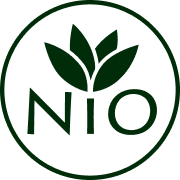Where does matcha come from? This is usually the second question we get asked after, “what is matcha”.
The short answer is that matcha comes from Japan, but where in Japan?
In this article, we’re going to take you on a deep dive through the matcha production process from leaf to cup to trace down the matcha green tea origin. We’ll also show you where matcha comes from when it’s low quality versus high quality.
Let’s get started! 🍵
Where does matcha come from?
So, where does matcha come from?
Matcha as we know it today is a Japanese product, but powdered tea goes back even further than that.
In this section, we’ll do a brief breakdown of the history to find the origin of matcha.
Where did matcha originate before Japan?
So where does matcha originate from?
Powdered green tea like matcha originated in China as early as the Tang dynasty (7th–10th century).
At this time, tea was pressed into bricks and then pieces were broken off to be ground and mixed into boiling water.
So this is the humble matcha green tea origin story, but it would need to undergo a radical change to become what we recognize today.
What does matcha come from?

So we’ve covered where did matcha come from, but now let’s talk about what does matcha come from.
Like other types of green tea, matcha comes from the tea plant, Camellia sinensis.
This seems simple, but it is a bit more complicated than that.
If you were to grind any old tea leaves into a powder, the flavor would be incredibly bitter, while premium matcha is smooth and creamy. So how do farmers pull off such a miracle? For that, you’ll need to read our article 👉 How is Matcha Made.
The introduction of shading
In medieval Japan, it became a common practice to cover tea plants with straw netting to protect them from the weather. Farmers found that this actually improved the flavor, rendering the leaves smoother and sweeter.
To this day, this shading is a key piece in explaining where does matcha come from, and why the flavor is so good.
The Evolution of Matcha Grinding
Early Beginnings: Yagen (9th–13th Century)
When matcha first appeared around the 8th century, the tea was far coarser than what we know today. The dried leaves were crushed using a yagen, a type of mortar and pestle originally used in traditional medicine. This produced a rough powder, lacking the silky smoothness of modern matcha.
Refinement with the Chausu (14th Century)
By the 14th century, tea grinding evolved with the introduction of the chausu, a hand grinder. This allowed for a finer texture, improving both the flavor and the preparation of tea during the Japanese tea ceremony. Still, the powder was not as consistent as what we expect from ceremonial matcha today.
The Ishi-Usu: Perfection in Stone (16th Century to Present)
The 16th century marked the development of the ishi-usu, a granite stone mill. This became the gold standard for grinding tencha leaves into matcha. The slow, circular grinding motion preserved the tea’s delicate aromas and nutrients, producing the ultra-fine, silky powder that defines authentic ceremonial matcha.
Modern Innovation: Electric Stone Mills (20th Century Onwards)
In the 20th century, modern electric stone mills were introduced to scale production while maintaining quality. These machines replicate the slow grinding motion of the ishi-usu but allow for larger quantities of matcha to be produced. This innovation made matcha more widely available worldwide, while still preserving its traditional essence.
Where does matcha come from in Japan?
So now that we’ve talked about where did matcha come from before it made its way to Japan, let’s talk about where does matcha tea come from in Japan. If we take a look at a map of Japan, one of the first things you’ll notice is that it is very spread out in terms of latitude.
Japan has everything from extreme cold climates in the northern island of Hokkaido to tropical climates in the small southern islands like Okinawa.
The tea plant is an evergreen shrub native to southern China, and it prefers mild, subtropical climates.
For this reason, it can’t be easily cultivated north of Tokyo and therefore matcha is really only grown in southern and central Japan.
Interested to learn more about where other Japanese green teas are grown? Make sure to read our article 👉 Where Does Japanese Tea Grow?
Where does matcha come from in Central Japan?
The largest production of matcha actually happens in central Japan, which includes well-known areas like Kyoto with richest tea history. It’s also where top matcha farmers are from, such as the Nakai matchas, the Chanoka matchas, or the Osada matchas. While most of Japan is mountainous, there are small pockets of flat land in these areas where tea can be easily produced.

Downsides to growing tea in colder climates
The downside of this area is that the winters can be quite cold, and therefore farmers need to take certain steps to avoid frost.
Some farmers will cover the roots of the matcha plant, use fans to blow air over the tea plants, and even spray water on them—all to keep the tea plants above freezing so the frost doesn’t damage them.
Where does matcha come from in Southern Japan?
In southern Japan, there are lots of great growing regions for matcha like Kagoshima (where the Sakamoto matchas are from), Kirishima (where the Henta matcha is from), and Yame.
Here, the tea plants benefit from mild winters and rich, volcanic soils. While central Japan produces the largest volume of tea, there are exceptionally high-quality teas being produced in the south.
Advantages of growing matcha in warmer climates
Because of the cold winters in central Japan, farmers tend to grow tougher, more frost-resistant tea cultivars like Yabukita. In southern Japan, frost isn’t as much of an issue, so farmers can experiment with more delicate tea cultivars like Saemidori and Asatsuyu.
These more delicate tea cultivars can produce a sweeter flavor in the tea. As a result, you will tend to find more of these rare tea varietals produced in southern Japan compared to the north.
Where does matcha come from when it is high quality?
Low-quality matcha can come from anywhere, so a better question might be where does matcha come from when it is high quality.
Japan mastered the art of matcha over the past 800 years. The first powdered tea that was brought over from China in the 8th century was likely very bitter, but through the discovery of shading, stem removal, and steaming, the flavor of this tea was greatly improved over time.
These techniques were passed down through generations, and the matcha being produced today is likely the best it has ever been. While it is possible to produce high-quality matcha in China, the best matcha tends to come from Japan because of multiple generations of knowledge, specialized equipment, and unique varieties of tea plants.
Where does matcha come from when it is low quality?
So now that we’ve talked about where does matcha come from when it is high quality, let’s talk about the low-quality stuff. Of course, low-quality matcha can be produced just about anywhere, but a lot of it will likely be coming from China simply because China produces the largest volume of tea.
If you know anything about matcha, you likely already know that matcha can’t be made from just any powdered tea leaves. The leaves have to be shaded for 3 weeks before the harvest, the top 3 sprouts are carefully picked, the stems are removed, and then the tea is ground into a fine powder.
If these steps are skipped, you end up with a low-quality matcha. This is how you’re able to find those cheap matchas made in China being sold online. They are still made from powdered tea, but they will taste extremely bitter.
Where does matcha come from when you get it from Nio Teas?
 If you want to try premium matcha tea, you can get it from our website, nioteas.com.
If you want to try premium matcha tea, you can get it from our website, nioteas.com.
After traveling around Japan for the past few years, we’ve met with dozens of farmers and sampled hundreds of different matcha teas.
We’ve ultimately selected a small handful of our favorites.
These matchas are produced on small family farms in the Japanese countryside, and we’ve had the great privilege to get to know the farmers and their families over the years.
If you’d like to support us and our mission, we would really appreciate it if you could try some of our teas with free worldwide shipping.





1 comment
Hello mates, pleasant paragraph and fastidious arguments commented here, I am truly enjoying by these.